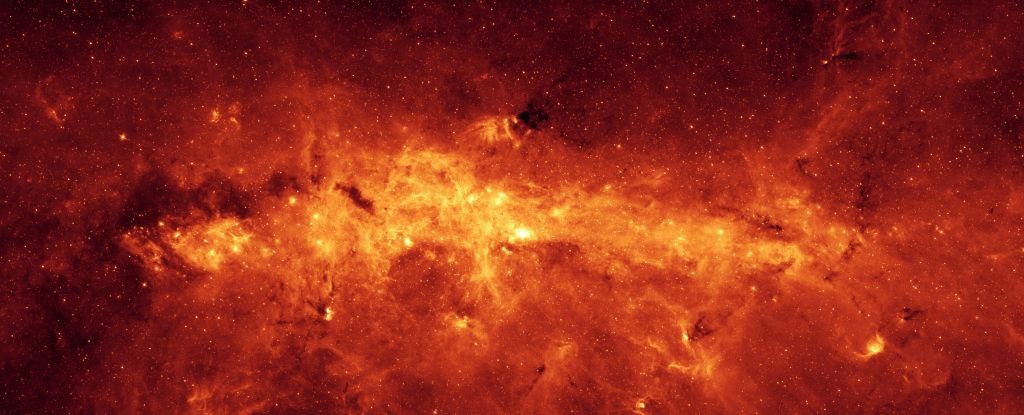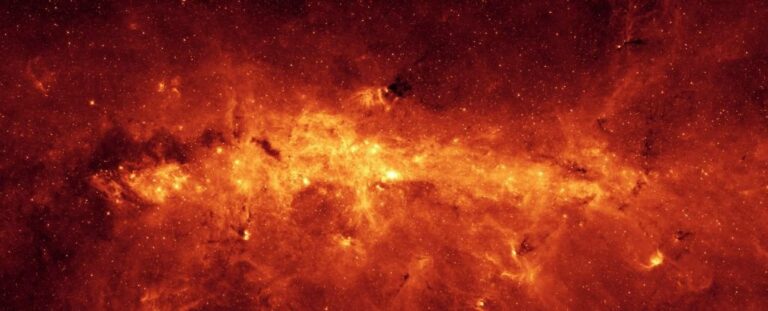Scientists Discover our Galaxy’s Core Reveals Ancient Stars from the Dawn of the Universe
Unveiling Ancient Stars: Milky Way’s Center Harbors Cosmic Dawn Offspring
In a quest to unravel the secrets of the universe’s oldest stars, scientists have successfully identified ancient celestial bodies born during the Cosmic Dawn residing within the central regions of our own Milky Way galaxy.

As part of an extensive survey aimed at locating these elusive remnants of antiquity, researchers meticulously scrutinized the galactic center and made a remarkable revelation—the measured rotational patterns of these ancient stars remain remarkably tranquil despite the surrounding chaos. The findings, led by astronomer Anke Arentsen from the University of Cambridge in the UK, were recently presented at the UK’s annual National Astronomy Meeting.
One crucial factor in determining a star’s age lies in its metal content. During the formation of the first stars in the universe, they had to assemble themselves from the elemental materials available at that time, predominantly consisting of hydrogen and helium. However, the nuclear fusion processes within their cores gradually synthesized heavier elements, ranging from helium to iron.
Subsequently, these massive stars underwent explosive supernovae events, dispersing these heavier elements, along with even more complex elements generated in fleeting, energy-intensive supernova phenomena, throughout the cosmos. Consequently, subsequent generations of stars inherited a higher proportion of these heavier elements. Thus, the younger a star, the greater its likelihood of possessing a significant metal content.

Intriguingly, as stars age, their metal content diminishes. While a considerable number of these “pristine” stars have been identified in the outskirts and galactic halo of the Milky Way, astronomers anticipate that the oldest of the old stars should predominantly reside in the galactic center. However, the region’s high metallicity and obscuring dust pose challenges for their detection, making them more elusive.
To address this, Anke and her colleagues embarked on the Pristine Inner Galaxy Survey (PIGS), a project aimed at locating these ancient stars. By analyzing the star’s emitted light spectrum, astronomers can identify specific elements that cause certain wavelengths to be amplified or attenuated. They searched for elemental signatures consistent with stars exhibiting very low metal content, ultimately pinpointing approximately 8,000 candidate stars.
Follow-up observations confirmed the chemical compositions of these metal-poor stars, resulting in a sample of roughly 1,300 ancient stars situated within the galactic center. The abundance of discoveries allowed the researchers to conduct comprehensive population studies.
Leveraging data from the ongoing Gaia observatory project, which maps the three-dimensional positions and motions of stars in the Milky Way, the team determined the galactic orbits of these ancient stars.

Arentsen and her colleagues made a notable discovery: the ancient stars in the galactic center exhibit relatively slow orbits. Despite their age, these older stars display a level of orbital chaos, yet their average trajectory remains centered around the galactic center.
Furthermore, the researchers observed that the stars’ orbits are primarily confined within the galactic center. Even those stars following elliptical paths tend to remain predominantly within the central region of the Milky Way.
Arentsen expresses enthusiasm, remarking, “It is exciting to think that we are observing stars that originated during the earliest stages of the Milky Way, a realm that was previously largely inaccessible. These stars likely emerged less than a billion years after the Big Bang, making them valuable remnants from the early universe.”
“The amount of available data on these ancient objects is expanding rapidly. I am eagerly anticipating the wealth of knowledge we will acquire about these pioneering stars that populated our galaxy in the upcoming years!” she concludes.
You can follow the team’s discoveries about these ancient stars on preprint server arXiv.
Do not forget to share your opinion with us to provide you with the best posts !




0 Comments